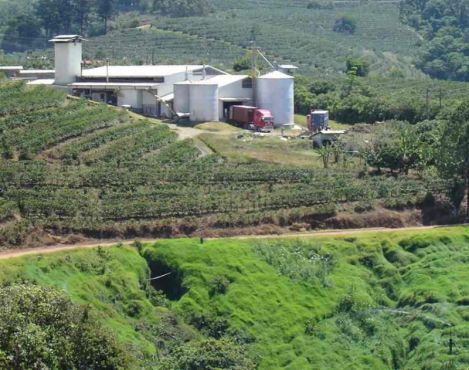SEATTLE, 2014-10-16— /EPR Retail News/ — Days start early for Victor Trejos.
Each weekday morning, he rises well before dawn at his home in Costa Rica’s capital city of San José and drives 15 miles into the hillside. By 6:00 a.m., his pickup truck rumbles down the narrow road to a coffee farm, where the day is already in full swing, with a team of more than 30 Starbucks partners (employees) weeding, replanting, fertilizing, and pruning.
Trejos is the general manager of Hacienda Alcasia, a coffee farm resting on the slope of the still-active Poas volcano. In its entirety, it spans more than 370 city blocks and is the first coffee farm Starbucks has owned in its more than 40-year history.
“Hacienda Alcasia has been a working coffee farm for generations, managed by a single family since 1970,” Trejos said. “The volcanic soil is rich in nutrients, and over its history has supplied high-quality coffee to Starbucks.”
Today, under the ownership of Starbucks, Trejos and his team have been working to transform the property into an agronomy research and development center. Its varied elevation makes it an ideal place to learn more about sustainable farming practices in different climates.
While Starbucks intentionally limited any significant investments on the farm so that it could function as a typical Central American coffee farm, they did prioritize one key element – a nursery. Led by Starbucks head agronomist Carlos Mario, thousands of seedlings are being grown to test new coffee varietals that improve disease resistance, quality and yield.
“The work at Hacienda Alsacia is helping us gain a better understanding of the challenges facing coffee farmers throughout our supply chain from environmental factors to the overall costs of running a working farm,” said Craig Russell, Starbucks executive vice president of Global Coffee. “To be a part of its first harvest is a special moment for me and a historic one for our company.”
More than 300,000 pounds of coffee were harvested in the farm’s first year under the guidance of Starbucks (Starbucks purchased 396 million pounds of green coffee in fiscal year 2013). 2,100 Starbucks district managers had the opportunity to taste this partner-exclusive “first crop” coffee during a Starbucks leadership conference in Seattle.
“I have been working in coffee for 20 years, but this harvest was different,” said Trejos. “It was very exciting to see all of our hard work come through with this very high-quality cup of coffee.”
See how work on Hacienda Alsacia has progressed since Starbucks purchased the farm in 2013.
About Starbucks Approach to Ethical Sourcing
Starbucks is committed to creating a better future for farmers and farmer livelihoods with integrated programs that help ensure a long-term supply of high-quality coffee, social investments that support coffee-growing communities, and investments in research and development.
In total, Starbucks has invested more than $70 million in collaborative farmer programs and activities, which includes C.A.F.E. (Coffee and Farmer Equity) Practices, Starbucks industry-leading ethical sourcing model developed in partnership with Conservation International which ensures coffee quality while promoting social, environmental and economic standards.
Starbucks has worked directly with farmers for more than ten years through its farmer support centers, which now operate in Costa Rica, Rwanda, Tanzania, Colombia and China. The company also provides farmers access to farmer loans to help cooperatives manage risk and strengthen their business, and works with Conservation International. Starbucks is also investing in farmers and their communities through its farmer loan program, and helping farmers plant or save shade trees in Indonesia, Mexico and Brazil.
Find details about the company’s approach to ethical sourcing in the Starbucks Global Responsibility Report.
For more information on this news release, contact newstips@starbucks.com.
